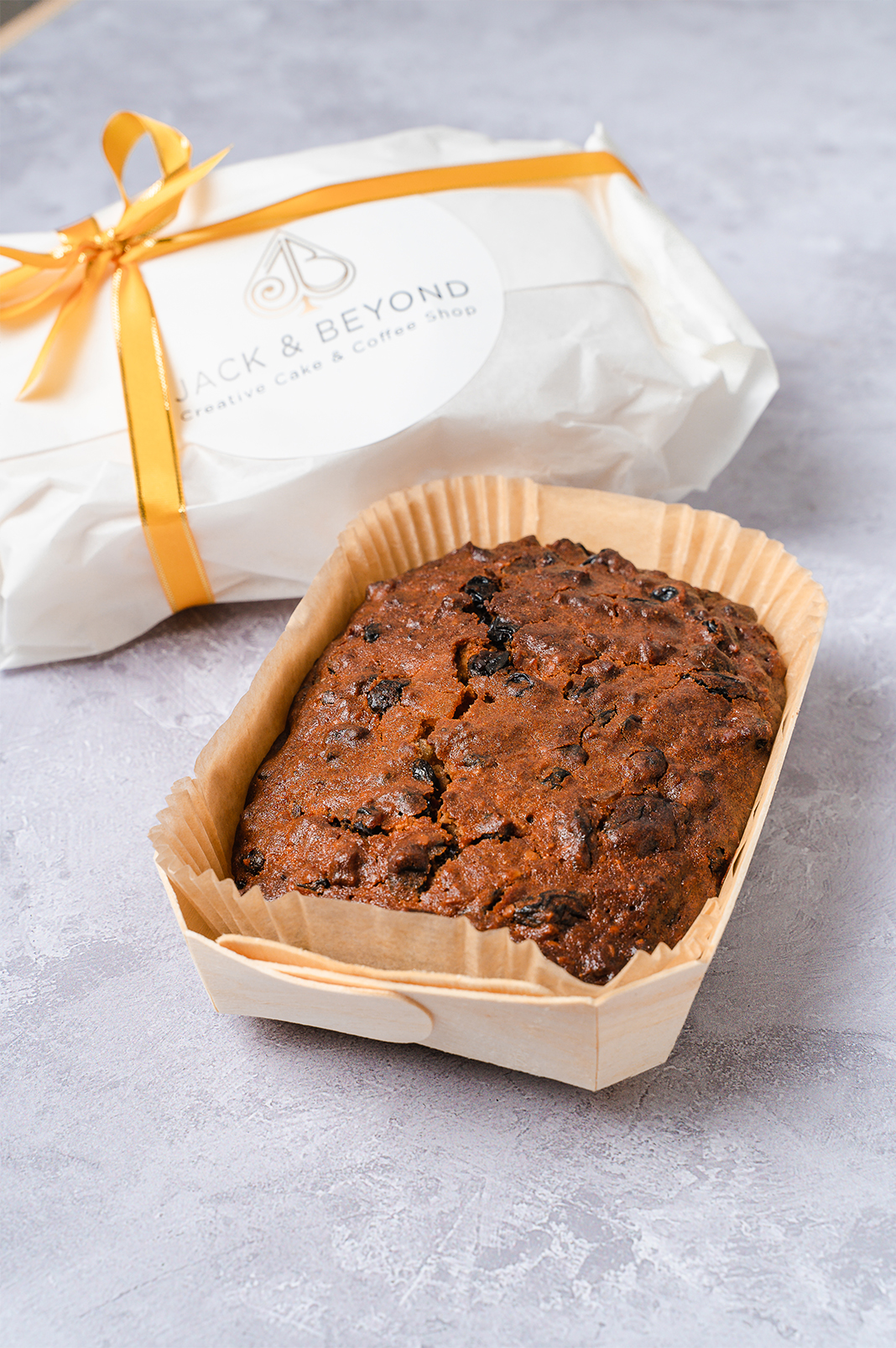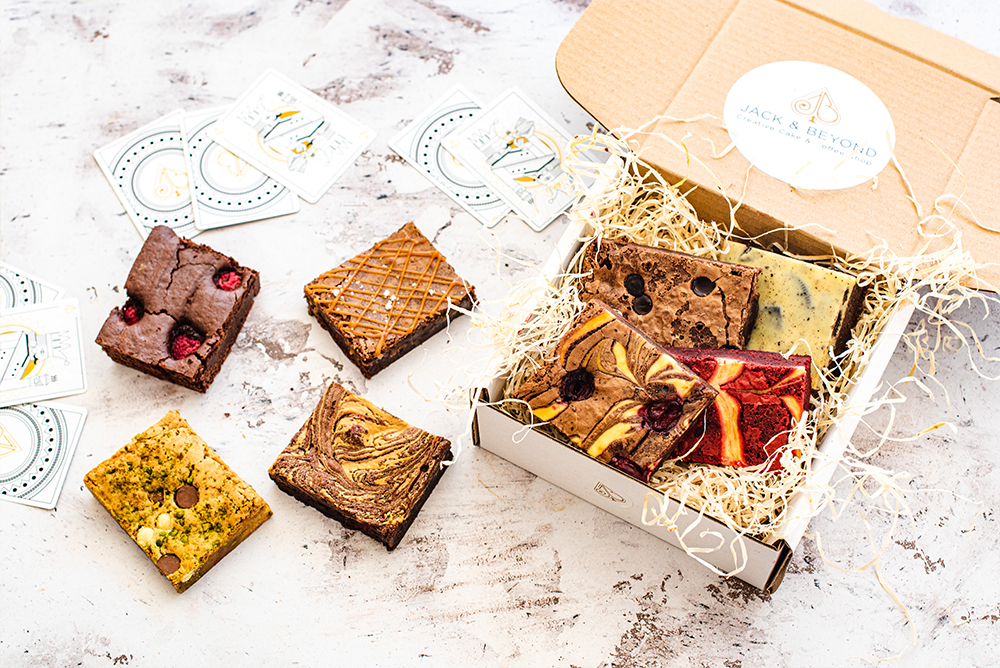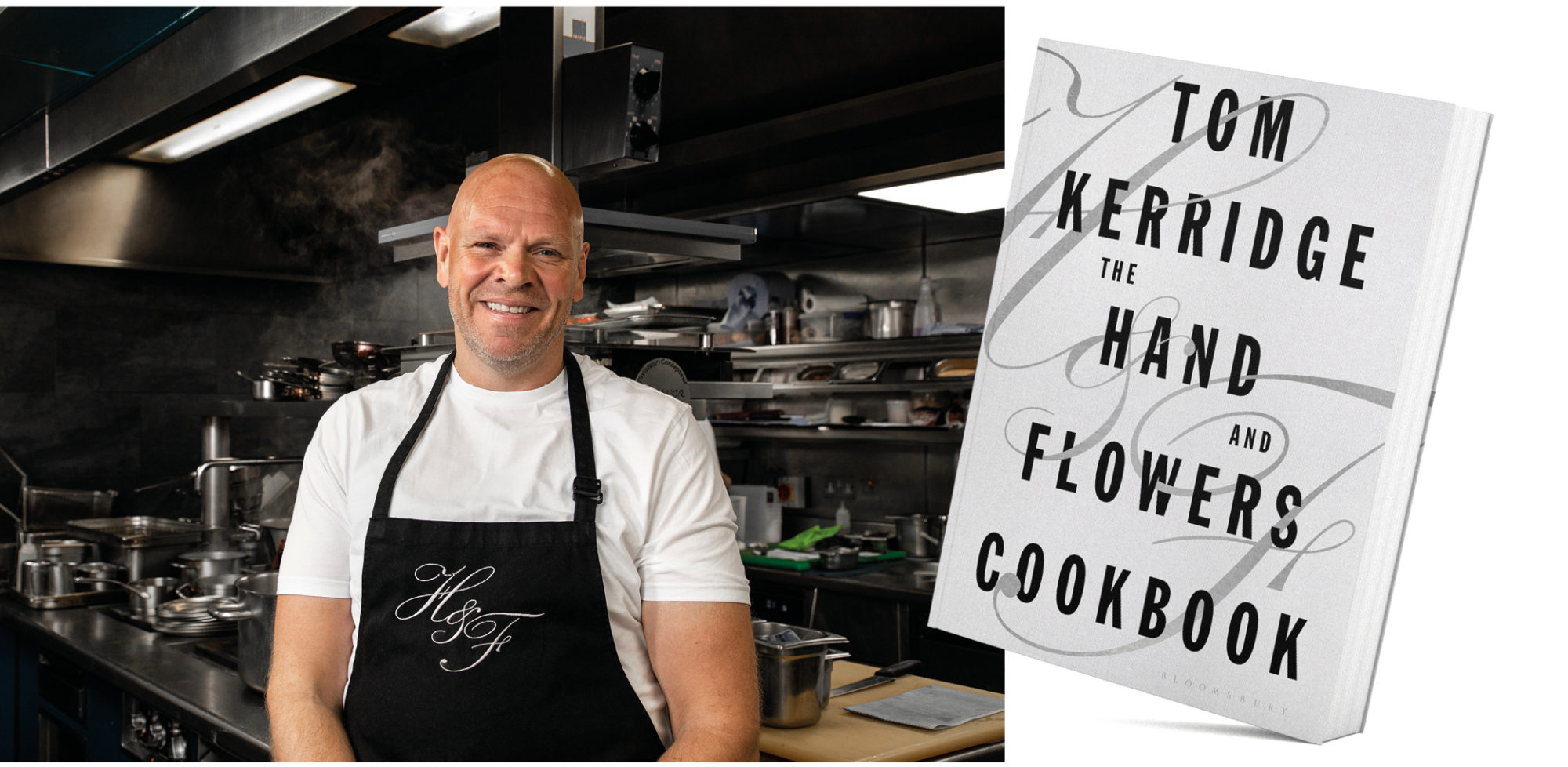We share a taste of Nadiya’s Fast Flavours published by Penguin Michael Joseph (£22)
Banana thyme loaf
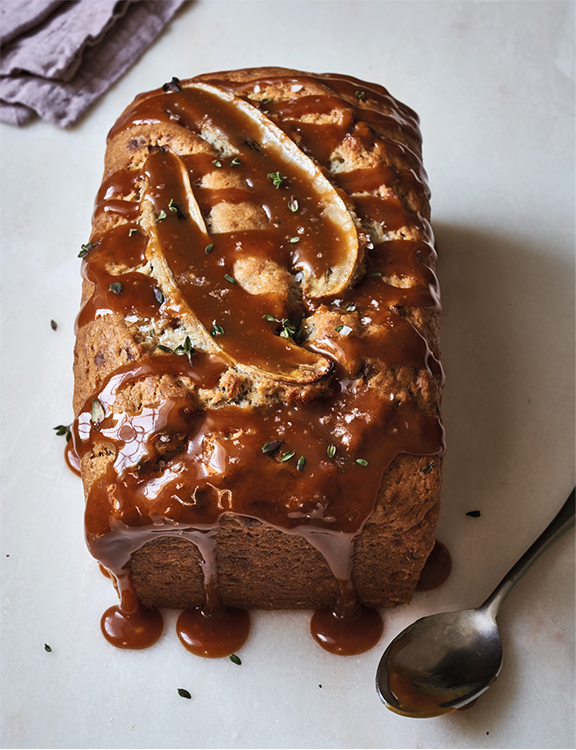
Ingredients:
• Four small bananas, three mashed (340g prepped weight), one sliced lengthways
• 50g salted butter, melted, plus extra for greasing the tin
• 175g caster sugar a pinch of salt
• a large sprig of fresh thyme leaves picked
• 120ml olive oil
• 75ml whole milk, at room temperature
• 300g self-raising flour, sifted
• 100g caster sugar 45g salted butter 60ml cream
• ½ teaspoon salt flakes
Prep: 25 minutes | Cooking: 1 hour | Serves: 8-10 people
Method
Put the mashed bananas in a bowl and leave out for half an hour to oxidise – this will make them browner and add to the colour. Or if you are in a rush, just mash the bananas and get to baking the loaf.
Line and grease a 900g loaf tin and preheat the oven to 180°C/ fan 160°C.
Add the butter and caster sugar to the banana and mix, then add the salt and thyme leaves, reserving a few to sprinkle at the end. Now pour in the olive oil and milk and mix through. Add the sifted flour and fold through until you have a smooth cake batter.
Pour into the tin and level off with a few sharp taps, add the two slices of banana, cut-side up, and bake for 50 minutes to an hour, covering loosely for the last 15 minutes. You’ll know it’s ready when a skewer comes out clean.
Meanwhile, make the caramel by adding the sugar in an even layer into the base of a pan, on medium to low heat, and watch as the sugar turns to caramel, stirring it occasionally. As soon as the sugar melts, add the butter. If you find it seizing, don’t worry, just keep stirring over a very low heat and the caramel will come together. As soon as the butter has melted, add the cream. Cook on a low heat for two minutes till you have smooth caramel. Take off the heat.
Remove the cake from the oven and leave to cool in the tin for 10 minutes, then take out and leave to cool on a wire rack.
As soon as it has cooled enough, drizzle over the caramel. If it’s become too stiff, warm gently and then drizzle. You will have caramel left over but not to worry, because we all need a little extra caramel and it’s perfect served on the side for anyone who wants some more to pour over. Sprinkle with a few thyme leaves, if you like.
The simplest of all recipes, this set-custard-slash-mousse pot is creamy, zesty and entirely foolproof. Using very few ingredients, the syllabub is infused with thyme and set with lemon juice. Simply serve with sponge fingers and a good cup of coffee.
Ingredients:
• 150g raspberries
• One teaspoon rose extract
• A sprig of fresh lemon thyme, leaves picked
• 300ml double cream 50g caster sugar
• One lemon, zest and juice sponge fingers, to serve
Prep: 15 minutes + 1 hour chilling | Makes: Four
Lemon Syllabub
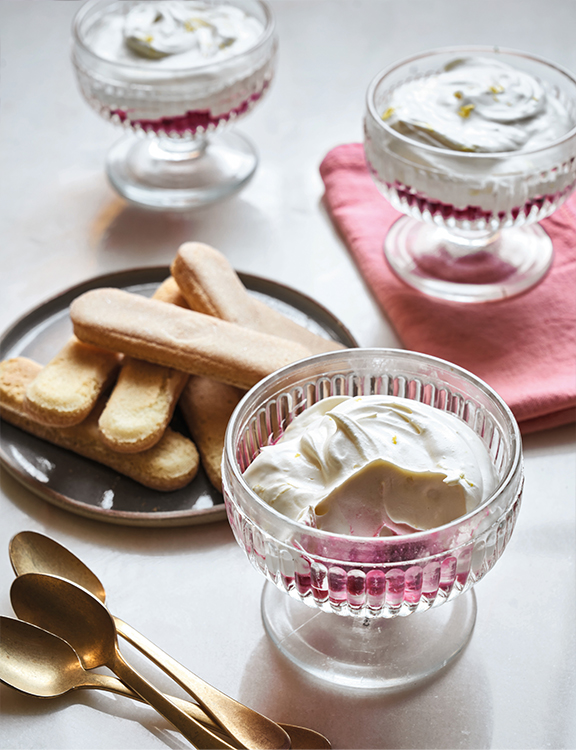
Method
Have four serving glasses or jam jars ready.
Mix the raspberries with the rose extract and lemon thyme leaves and mash a little to break up. Divide the mixture into the four glasses.
Add the cream and sugar to a mixing bowl and whip to soft peaks. Add the lemon zest and juice and fold through. Spoon on top of the raspberries. Ideally chill for an hour before serving, but you can eat it straight away!
Serve with sponge fingers.
Enjoy our recipes? Show us your creations on social media with the tag #RArecipes












